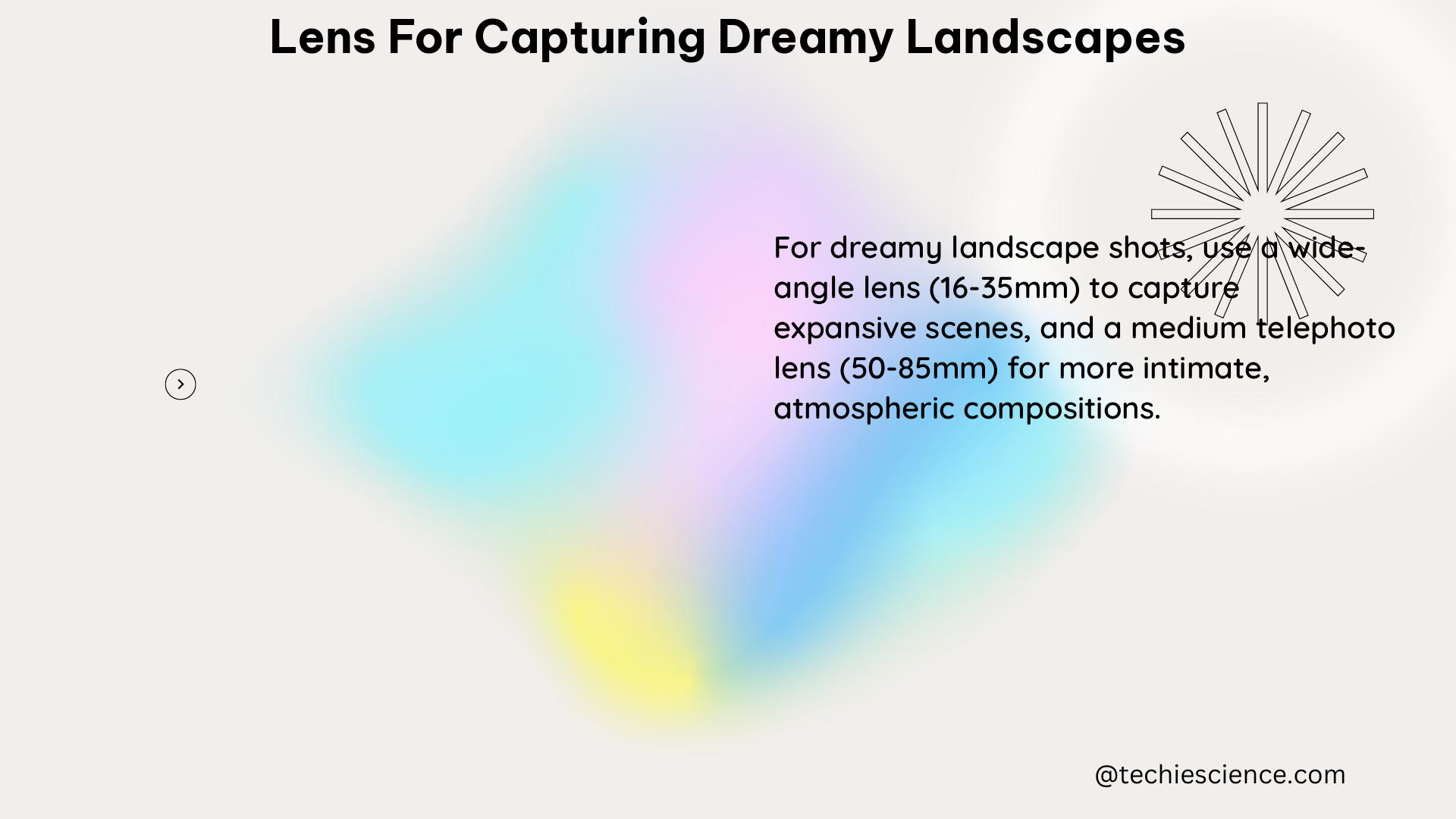Capturing the essence of a dreamy landscape requires a deep understanding of the physics behind lens selection and camera settings. Telephoto lenses, with their ability to compress the scene and create a shallow depth of field, are the go-to choice for photographers seeking to evoke a sense of depth and intimacy in their landscape images.
Understanding Focal Length and Angle of View
The focal length of a lens is a crucial factor in determining the angle of view and magnification of a scene. Longer focal lengths, such as those found in telephoto lenses, provide a narrower angle of view and greater magnification. This compression of the scene can create a sense of depth and intimacy, making the viewer feel closer to the subject.
The relationship between focal length and angle of view can be expressed mathematically using the following formula:
Angle of View = 2 × arctan(Sensor Size / (2 × Focal Length))
For example, a 50mm lens on a full-frame camera has an angle of view of approximately 40 degrees, while a 200mm lens has an angle of view of only 12 degrees. This narrower angle of view allows the photographer to isolate specific elements within the landscape and create a more abstract, dreamlike composition.
Depth of Field and Aperture

Depth of field, the range of distances in a scene that appear sharp, is another critical factor in creating dreamy landscapes. A shallow depth of field, where the subject is in focus but the background is blurred, can contribute to the dreamlike quality of an image.
The depth of field is determined by the aperture, or f-number, of the lens. A larger aperture (smaller f-number, such as f/2.8) will result in a shallower depth of field, while a smaller aperture (larger f-number, such as f/16) will create a deeper depth of field.
The formula for calculating depth of field is:
Depth of Field = 2 × Circle of Confusion × (Focal Length^2) / (Aperture^2 × (Subject Distance – Focal Length))
By using a telephoto lens with a large maximum aperture (e.g., f/2.8), photographers can achieve a shallow depth of field that blurs the background and creates a dreamlike effect.
Lens Compression and Perspective
In addition to depth of field, the compression of the scene created by a telephoto lens can also contribute to the dreamlike quality of a landscape image. This compression is a result of the longer focal length, which compresses the distance between foreground and background elements.
The degree of compression can be quantified using the following formula:
Compression Ratio = (Subject Distance × Focal Length) / (Sensor Size × Subject Size)
A higher compression ratio, achieved with a longer focal length, can make distant elements appear closer together, creating a more intimate and dreamlike composition.
Stabilization and Technique
Capturing sharp, dreamy landscapes with a telephoto lens requires careful attention to camera stabilization and shooting technique. The longer the focal length, the more susceptible the image is to camera shake and blur.
To mitigate this, photographers often use a tripod or other stabilization device, such as a monopod or gimbal. Additionally, the use of a remote shutter release or self-timer can help to minimize camera movement during the exposure.
When shooting handheld, it’s important to follow the “1/focal length” rule, which states that the shutter speed should be at least the reciprocal of the focal length to avoid blur from camera shake. For example, when using a 200mm lens, the shutter speed should be at least 1/200th of a second.
Lens Recommendations for Dreamy Landscapes
When it comes to capturing dreamy landscapes, the following telephoto lens recommendations are popular among photographers:
| Lens | Focal Length | Maximum Aperture | Key Features |
|---|---|---|---|
| Canon EF 70-200mm f/2.8L IS III USM | 70-200mm | f/2.8 | Fast, constant aperture, image stabilization, L-series build quality |
| Nikon AF-S NIKKOR 70-200mm f/2.8E FL ED VR | 70-200mm | f/2.8 | Fast, constant aperture, vibration reduction, ED glass elements |
| Sony FE 70-200mm f/2.8 GM OSS | 70-200mm | f/2.8 | Fast, constant aperture, optical stabilization, G Master series quality |
| Fujifilm XF 50-140mm f/2.8 R LM OIS WR | 50-140mm | f/2.8 | Constant aperture, optical image stabilization, weather-resistant |
These lenses offer a combination of a long focal length, large maximum aperture, and advanced stabilization features, making them well-suited for capturing dreamy landscape images.
Conclusion
Capturing dreamy landscapes with telephoto lenses requires a deep understanding of the physics behind lens selection, camera settings, and shooting technique. By leveraging the compression, depth of field, and stabilization capabilities of these lenses, photographers can create images that evoke a sense of depth, intimacy, and dreamlike quality.
References:
– Reddit Thread: Landscapers, what focal length lenses to carry?
– Olympus Learn Center: Telephoto Landscapes – Why You Should Use a Telephoto
– Serena’s World: Beginner to Professional Lenses for Landscape Photography

The lambdageeks.com Core SME Team is a group of experienced subject matter experts from diverse scientific and technical fields including Physics, Chemistry, Technology,Electronics & Electrical Engineering, Automotive, Mechanical Engineering. Our team collaborates to create high-quality, well-researched articles on a wide range of science and technology topics for the lambdageeks.com website.
All Our Senior SME are having more than 7 Years of experience in the respective fields . They are either Working Industry Professionals or assocaited With different Universities. Refer Our Authors Page to get to know About our Core SMEs.